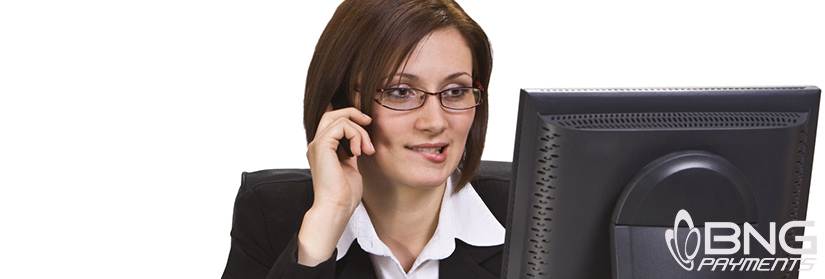
As much pressure as there is for every merchant and their brother to purchase EMV terminals and pin pads, there’s something you should probably examine as a business before taking the plunge.
Despite attempts by payments processors at convincing every merchant and small business to buy expensive, new equipment, you may be a merchant that EMV does not apply to.
Moto merchants are merchants whose form of transactions are key entered (manually entered) rather than card present transactions, such as over the phone or through email.
This could also be E-Commerce transactions.
For example, if you are a small travel agency where you take card numbers over the phone, or sell Mary Kay products over the phone, you are a moto merchant, and EMV has no effect on you.
If you own a gas station that has the pay at the pump option, your deadline has been shifted to 2017 for the outside payment options.
Inside terminals liability changes still take effect on October 1st, but outside terminals have an extension due to the costs of replacing them.
If you own a gas station or convenience store owner, where your customers swipe cards at the pump, it could cost you nearly $6,000-$10,000 to replace one terminal that has an EMV reader in your terminal. (hmm, $400 per terminal doesn’t seem so awful anymore).
E-Commerce has its own category under the Moto charge list for Visa and MasterCard. (for those who don’t know, E-Commerce applies to any type of business transaction that transfers information across the internet).
Businesses like Amazon, Etsy, and eBay are not affected by EMV at all.
If you are a small business that does no face to face transactions and simply sell online through shopping cart transactions, your business has no need for an EMV terminal.
However, Visa is attempting to apply EMV for E-Commerce, with a feature known as “dynamic passcode authentication.”
Mastercard likewise is creating “chip authentication program."
While the technology is not widely adopted yet, Visa and MasterCard are slowly trying to incorporate it in the future.
Here’s the tricky part, EMV does apply for these types of merchants.
The process, however, still does not benefit in actual security from EMV like other card present transactions.
The main goal of EMV is to reduce counterfeit credit cards, which are created through a plastic copy card with skimmed information.
Since the server still takes the card and rings it in the back, the cardholder’s card could still be compromised through skimming. In this situation, the transaction happens away from the cardholder, which means the card's secured pin is not entered, defeating the purpose of the "chip and pin" security.
In reality, bars, and restaurants aren’t set up to process cards through the pin chip method as they are in Europe.
Take a look at our services, and see how other businesses have solved their credit card processing, and EMV, struggles.
If you’d like to learn more about what steps to take with your own business or would like a free EMV and credit card processing consultation, contact us here.
